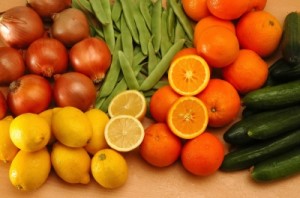By Abraham Safirstein
To me, the term antioxidant is a misnomer. In my mind “anti” is for something that we want to get rid of, and saying that we want to get rid of oxygen is ridiculous, in particular being that we would not survive 2 minutes without it. Oxygen is not only important, it is vital for life, and no biological function would be possible without it.
The problem with this is that, when out of control, oxygen becomes a free radical, the dangers of which we will explain below. Most scientists look at something that has the potential to cause damage and they look for a way to block it. I rather direct the oxygen atoms safely to where they are going to be utilized efficiently by bonding them to antioxidants.
In order to survive and thrive I would suggest we first try to understand it so we can identify a solution. Let’s look at water; a water molecule is represented as H2O, which means 2 atoms of hydrogen and 1 of oxygen. Just to understand the complexity of Creation, we know that every atom consists of a nucleus and a different number of protons and electrons which circle the nucleus in an orbit. The electrons in an atom are the ones that bind with electrons in other atoms to form molecules with different levels of magnetic strength.
Hydrogen has 1 electron and oxygen has 2, so when they are paired into water, each one of the oxygen’s electrons bind into each of the single hydrogen electrons to form the water molecule H2O (H-O-H). What fascinates me is that by themselves, hydrogen and oxygen create fire, but when combined they put it out! Here is another example: chlorine and sodium by themselves are poisonous; together they make salt, which is essential to life.
Open electrons in an oxygen molecule have a very powerful affinity to pair with other electrons. This is called oxidation. Free radicals are oxygen atoms that have become open (unpaired) in a living medium; they are prone to grab onto anything that is around potentially damaging adjacent cells. How does this happen? Cells are made up of many different molecules which are complete units. When a free radical attaches to a molecule, it breaks a bond to grab the electron to which it wants to pair, creating a chain reaction where each radicalized molecule attaches to the next one with a domino effect. What protects cells from free radical damage is called an “antioxidant”, or as I prefer to call it, an oxygen scavenger. These molecules seek out and grab the free oxygen radical before any damage occurs and transport it to where it can be put to good use. Therefore, the more antioxidants we have available, the less damage we get from free radical oxidation.
Where do antioxidants come from and how can we get plenty of them to keep those crazy radicals from making a mess of our cells and cause dis-ease? Fruits and vegetables, when we consume them, they provide plenty of antioxidant molecules. Antioxidants are carriers; they are attracted to free radicals and their job is to bind any open oxygen electron and keep them “calmed” until they transport them where they are needed for the different metabolic functions that the body needs to perform. It is difficult to fathom the speed at which these reactions occur. Just pay attention for a minute at your respiration; every time you breath in, oxygen is removed from the air in the lungs and is transferred to the red blood cells for transportation all over the body; at the same time when we exhale, we get rid of carbon dioxide, and so it goes, second after second, beat after beat, nonstop. If we supply ourselves with enough antioxidants, everything runs smoothly; if we don’t, oy vey, trouble.
Antioxidants are a great anti-cancer weapon since they act as a Trojan horse in cancer cells. Cancer cells are anaerobic, which means –as explained above– that they don’t generate energy through oxidation but through fermentation, and are not able to tolerate oxygen inside them. When a natural antioxidant, a sugar-like molecule, enters a cancer cell through a glucose receptor, one or more oxygen atoms piggy back with it into the cell. The cancer cell uses the sugar for energy leaving oxygen atoms with free electrons inside, which damage the cancer cell from within until they destroy it. By the way, this is exactly the same thing that radiation and chemotherapy do, just that they damage or destroy the healthy cells in the process. As for healthy cells, oxygen left open in them is just used to create more energy through oxidation, so no damage occurs.
So, someone might want to tell me: They call them antioxidants, not oxygen scavengers, what’s the big deal?! The big deal is that most conventional doctors are afraid of using antioxidants when giving a patient chemotherapy and radiation. The concept that antioxidants assist cancer cells to avoid being oxidized by chemo and radiation is an assumption that was never proven. If you look for the research in human studies on chemo or radiation and antioxidants, the results are often quite positive, which is surprising considering all the bad press we have all heard. Here is an article from Pubmed titled: “Impact of antioxidant supplementation on chemotherapeutic efficacy: a systematic review of the evidence from randomized controlled trials” which can be found at http://www.ncbi.nlm.nih.gov/pubmed/17367938.
This is its conclusion: “None of the trials reported evidence of significant decreases in efficacy from antioxidant supplementation during chemotherapy. Many of the studies indicated that antioxidant supplementation resulted in either increased survival times, increased tumor responses, or both, as well as fewer toxicities than controls”.
So, listen to your mother and “eat your veggies”!

